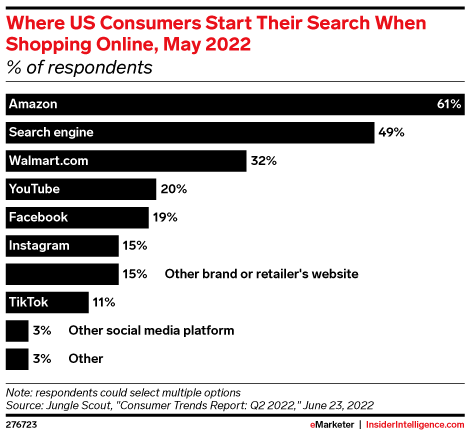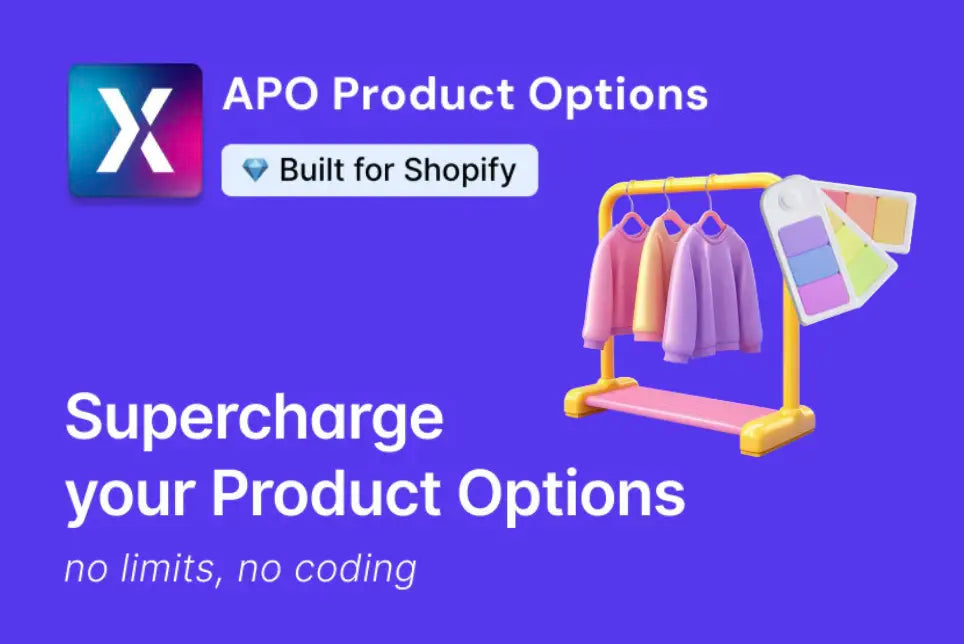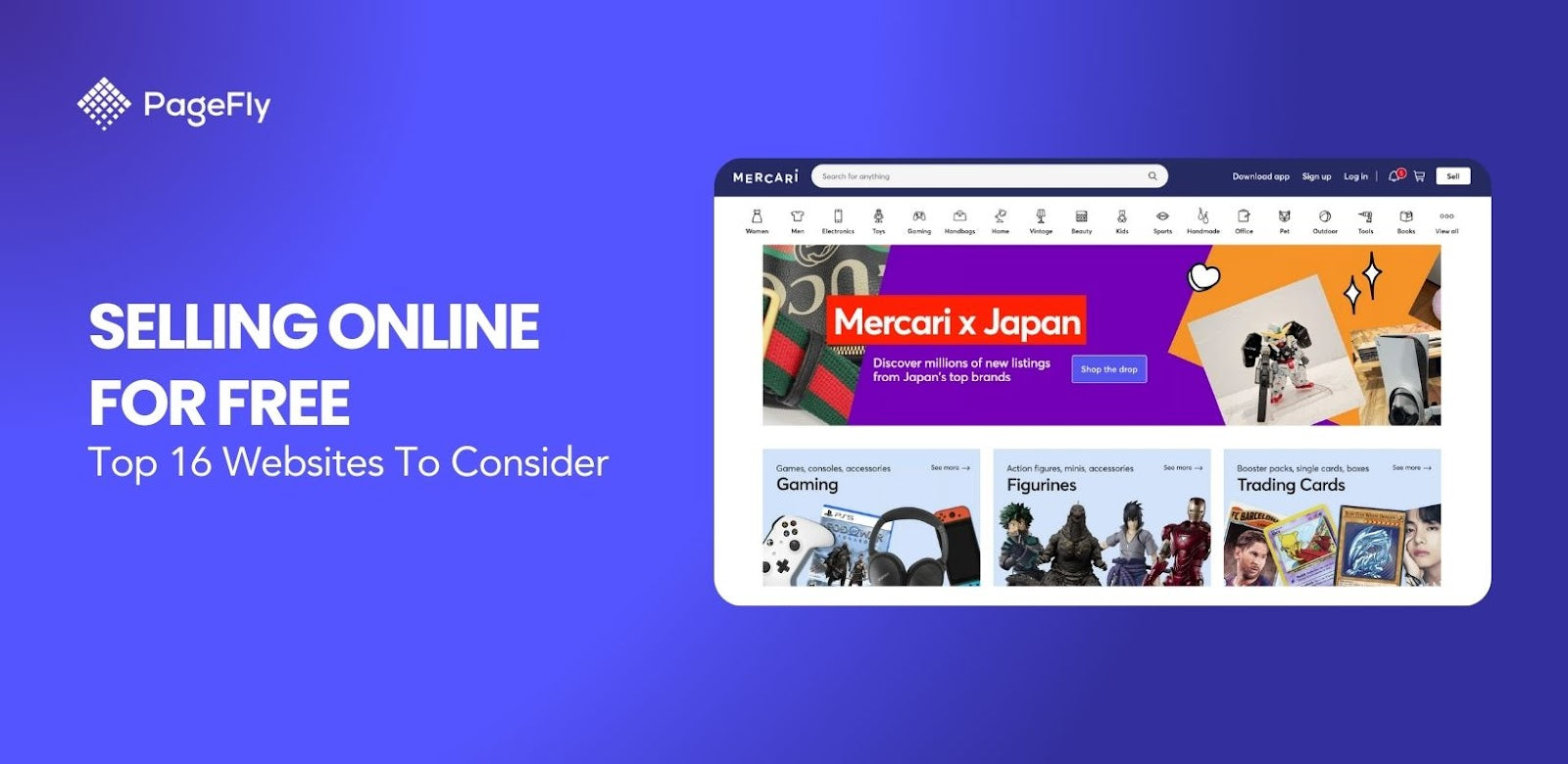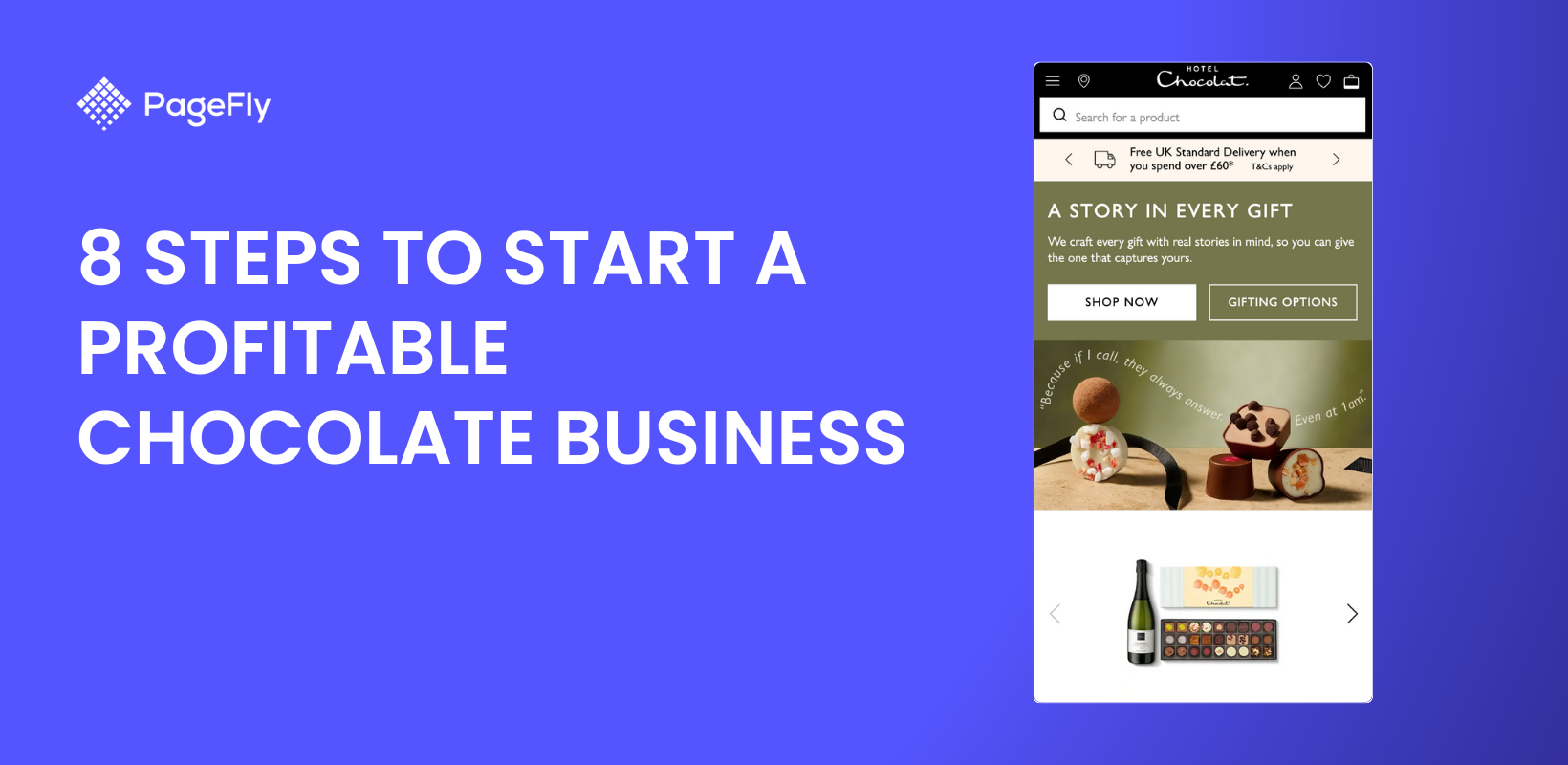When operating an online business today, you'll run into hundreds of online selling platforms. Some concentrate on particular fields, such as technology and video games. Others permit retailers to sell anything, including clothes, books, furniture, and more.
Although there are advantages to selling online, commissions and transaction fees frequently discourage sellers from joining.
The way we approach starting a business has completely changed as a result of online selling. Shoppers go online first in over 60% of shopping occasions, it stands to reason that online selling is becoming a more lucrative business venture for aspiring young entrepreneurs.
There are numerous online selling sites available that are the ideal fit for you, no matter what your goal or what you're selling. We've done the research and identified the best sites to sell your products online. In addition, we'll discuss the advantages of opening your own store and how combining both can increase your online sales.
Let’s get started.
Outline
- What are Online Selling Platforms?
- 3 Key Benefits of Selling on Online Platforms
- Top 6 Best Online Selling Sites
- 5 Tips to Sell your Stuff Online Successfully
- Conclusion
What are Online Selling Platforms?
An e-commerce website that enables people and businesses to open stores and list their products online is known as an online selling platform.
Online marketplaces like Amazon, eBay, Etsy, Alibaba, Google Express, Walmart, and others are among the most popular ones. Additionally, a lot of e-commerce platforms offer virtual assistance, online tech solutions, and courses that can help you complete your task virtually.
In addition, there are numerous specialized online stores like Ruby Lane, Bonanza, and Newegg; fashion-specific stores like Fullbeauty and Zalando; price-focused websites like Tanga or Tophatter; and a plethora of others.
In fact, you can reach potential customers anywhere in the world through more than 100 online marketplaces, even Facebook marketplace for example. However, keep in mind that you must choose the channels that will work best for your brand.
3 Key Benefits of Selling on Online Platforms
Ecommerce marketplaces and online sales are constantly developing new strategies to satisfy customers as a result of their rising popularity.
For third-party sellers, that is fantastic news.
It implies that the majority of marketplaces will take great care to make it as simple as possible for brands and retailers to market, sell, and fulfill.
Why? Because customers will have a better experience and be more likely to return for more if you find the platform to be simple to use.
This manifests in three attractive advantages in particular:
1. Easy and simple procedures
Launching as a seller on an online marketplace is a simple and straightforward process. You only need to upload your product listing and start selling once you have been authorized to sell on marketplaces as a third-party seller.
In general, higher-end marketplaces are also simpler to integrate with, enabling users to use their SaaS solution to streamline processes while guarding themselves against any potential risks.
2. Massive customer base available
A sizable built-in base of customers frequents many online e-commerce websites on a regular basis.
Just think: between Amazon, eBay and Walmart alone, you’re looking at close to nearly 3 billion active monthly visitors.
Did you know that many of those customers begin their product search on marketplaces?
They don’t even bother with Google or retail websites. In fact, when it comes to online shopping, 61% of US consumers begin their product hunt on Amazon, close to half on a search engine like Google, and 32% on Walmart.com.

3. Benefit from established programs
The majority of the biggest online marketplaces employ software to help you navigate the interaction between marketing, trading platforms, and fulfillment. For instance, sellers on Google, Amazon, and eBay can access Google Shopping Actions, Amazon Advertising, and eBay Promotions Manager. These digital marketing programs are crucial for putting your goods in front of all of your target customers at the appropriate times.
Sellers can meet customers' expectations for quick, free deliveries by using similar options. For instance, you can choose to have the marketplace warehouse pick, pack, and ship inventory on your behalf through programs like Fulfillment by Amazon (FBA) and eBay Global Shipping.
Top 6 Best Online Selling Sites
The upside is that your profits are yours. There are no commissions, and you have complete control over your pricing strategy. Here are the best platforms you can use to create your very own online selling site:
Ecommerce platforms
Shopify

Shopify is arguably the most well-known eCommerce platform worldwide, as you are already aware. Particularly in nations where English is spoken, it is an obvious choice.
It has all the tools you need to get going, such as generators for your logo and company name. Your store can be created and managed with a few clicks.
With Shopify, you can start selling online in four easy steps:
- Create a Shopify store
- Find suppliers with Shopify Handshake or a dropshipping app of your choice
- Install Shopify Apps for landing page builder, lead generation, customer service, and email marketing
- Count the money coming your way
Shopify has got to be one of the most user-friendly and reliable platforms for building your own website to sell your products. More than four million websites were using Shopify as of November 2022 to manage their business.
Shopify is the go-to option for first-time business owners on a tight budget because Shopify is a fully hosted platform which means you don’t need to install, manage, or update any software. You also don’t need to worry about security, performance, backups, and compatibility issues.

Why we rate Shopify as the best platform overall
- The most user-friendly platform available is Shopify. Without knowing a single line of code, anyone can set up a stunning online store and begin selling within minutes. With Shopify, there is essentially no learning curve.
- No matter what kind of business you have or how big it is, you can still create a fantastic online store with Shopify because it is flexible and universal. Certain platforms are only appropriate for certain kinds of businesses.
- Shopify is a platform that has been committed to business and entrepreneurship since its inception, in contrast to some platforms that started out as site builders before transitioning to the e-commerce space. They concentrate on what they excel at: making it simpler to launch, manage, and expand a business.
- In addition, Shopify provides extensive free learning resources to assist you at every stage of your business journey, whereas other platforms still have a long way to go.
- The leading platform with over 2 million online retailers, Shopify, has thousands of 5-star reviews from customers, which speak for themselves.
Shopify Cons
Every platform has its flaws, and Shopify is no exception. Many claim that Shopify is more difficult to customize than other platforms. But unless you want a lot of customization for your online store, it's not a big deal.
You can indeed customize your store on Shopify. You can still easily change layouts, colors, effects, styling, and other things even if you're not a techie. Make sure you understand the fundamentals of this CMS in the Shopify beginner's tutorial before you start customizing.
However, you need to edit some code (Shopify uses a template language called "Liquid") if you want a higher level of customization. You can hire a Shopify expert, install an extension, or manually code the website yourself.
Shopify Pricing

- Basic Shopify: $25/month
- Shopify: $65/month
- Advanced Shopify: $399/month
Pricing changes depending on Shopify’s policy and where your store is based. The pricing above is for USA-based stores. Click here to check the current pricing, and scroll down to the bottom right corner to change your location.
After signing up, you'll receive a free trial of Shopify for beginners (no credit card required). This will give you the chance to get hands-on with the tools, create your demo store, test some fundamental features, etc., and determine whether Shopify is a good fit for your own online store. Your demo store will be automatically shut down and you won't be charged anything if you don't buy a plan before the trial expires. Therefore, there is no risk associated with signing up.
Starting in January 2023, Shopify will be offering a special promotion that will let you start using the platform for selling for just $1 per month for the first three months. Since there is no information on when this promotion will end, now is the ideal time to try Shopify.

WooCommerce

If you're starting from scratch, using Shopify is the simplest way to sell products online. But you can try WooCommerce if you already have a WordPress website.
WordPress was used to create the open-source eCommerce platform known as WooCommerce. You puff after installing the free plugin and your website transforms into a running store.
It is currently the second most popular eCommerce option globally. WooCommerce is more popular than Shopify in some places, like Russia.
Programmers and designers will lean towards WooCommerce
Pros:
- Open source and can be modified to the code (no limitations).
- Reports from WooCommerce can include data about sales by date, product, and category. These reports can be exported via CSV.
- WooCommerce offers hundreds of designs and themes which can be automatically programmed to be mobile responsive.
- You can add any functionality imaginable to your website with the help of more than 59,000+ WordPress plugins.
Cons:
- There is no built-in drag & drop design builder.
- It comes with a learning curve and requires more hands-on management of your website
Price:
It costs about $10/month to cover the basic features you’ll need to make the free WooCommerce plugin functional. Moving beyond the basics towards some bells and whistles will cost an additional $200 or so per year. For large-scale WooCommerce websites, total annual costs could be upwards of $1,000.
Benefits of WooCommerce:
- It is free and open-source
- It has a highly engaged user community
- You can add unlimited features with eCommerce WP plugins
Magento

Starting your own Magento store might be unnecessary if you only want to sell your goods online for free. Professionals in the eCommerce industry who demand top-notch solutions frequently use Magento.
Adobe, the company that produced some of the most significant tools for web designers, purchased Magento Commerce in 2018. Magento has the best drag-and-drop online store builder and fantastic UX, which comes as no surprise.

Magento Marketplace has more than 3,700 extensions that you can use to customize your store.

Numerous well-known companies choose Magento, including Samsung, Ford, Nike, Nestle, Christian Louboutin, and many others. Users can create online stores that they can completely customize and control using this robust platform. Additionally, you can use additional POS systems for Magento to better manage and save money to sell stuff online.
Pros:
- Very flexible platform; as long as you know how to code, there are no limitations on how you can design your store.
- Ideal for medium-sized to large companies, this cutting-edge platform works well for companies that have in-house web development teams or have the budget to hire developers.
Cons:
- Need to rely on the skills of a web developer to integrate your marketing tools if you want truly bespoke features
Magento’s price:
- Magento Open Source free to download and use. However, you need to pay for everything else associated with the site, such as hosting, themes, add-ons, etc.
- Magento Commerce: the enterprise-level solution. Prices are often quoted by a sales rep, and are reported to run anywhere, ranging from $15,000 to $50,000 per year.
Ecommerce Platform Comparisons
Shopify | WooCommerce | Magento | |
Ease of use | Fully hosted platform | Not a hosted platform | An open-source platform like WordPress |
Cost | $25-399/month | $10/month | $1,988/month |
Hosting | Free, Cloud-hosted | $6.95/month, Self-hosted | $11-88/month, Cloud-hosted |
Customization | Built-in drag & drop design builder | Super flexible, full control of the whole platform | For web developers that can interpret jargon and use code |
Extensions | Over 8,000 both free and paid apps | 59,000+ free WordPress plugins and many more paid plugins | More than 3,700 native integrations via Adobe Commerce Marketplace |
Security | 0.15–0.30% per transaction | $10/year | $12-149/month |
Mobile Responsiveness | Yes | Yes | Yes |
Support | 24/7 customer support via live chat, phone, email, and Twitter. | 24/7 chat support for anyone who purchases any premium extension or theme | 24/7 access to live rep. Other support channels include email or help desk, chat, |
Community (how many active users, major location) | 4.4 million, USA | 6.6 million, USA | over 239K, USA |
Online Marketplace
Amazon
Unquestionably a trustworthy and popular website, Amazon draws more than 20.6 million visitors each month. For your customers, selling on Amazon automatically fosters a feeling of comfort and confidence. Additionally, a large number of visitors increases the likelihood that your items will be seen. You can sell online more quickly and earn more money each month by simply adhering to the fundamental Amazon product photography guidelines.

The ability to run a business on Amazon is available to anyone who sells almost anything. Simply make sure that your price range is aggressive enough to compete without significantly reducing your profit margins. Small business owners may find it a little more difficult because prices are so competitive because others are selling in large quantities.

- Individual monthly fee: $0.99/ item sold plus additional selling fees. This plan will be appropriate for you if you sell less than 40 items per month.
- Professional monthly fee. $39.99/ month plus additional selling fees. This will become your best option if you sell more than 40 items a month.
Amazon has a reputation for checking sellers and removing fake goods from its marketplace. Additionally, it has gained customers' trust by promptly delivering the goods they order.
The most well-known and prosperous eCommerce website at the moment is Amazon. Because of the vast number of buyers who visit Amazon, it might be the best place to sell items online.
Using Amazon has several key advantages, including:
- Access to Amazon’s worldwide infrastructure
- You don’t need to worry about shipping or customer service fee
- Huge user-base
eBay
Chances are you’ve come across eBay once or twice in your day. It’s the original online selling site, having been online since 1995. EBay has over 1.3 billion listings and 138 million users worldwide, according to the latest eBay statistics.
You can sell anything on eBay, from everyday items like shoes and watches to weird stuff like popcorn-scented pillows, bottles of air, and vintage ’70’s hand chairs.
Consider eBay's selling fees if you intend to sell items there. Each product has a non-refundable listing fee, and there is an insertion fee for the same products in two different categories. It also levies a final value fee, which is calculated as a percentage of the total sale price, including shipping and handling costs (typically between 10% and 12%).
Similar to Amazon, eBay has a sizable audience that you can sell to quickly and can be a useful addition to your online store's existing sales channels.
Etsy
Similar to Ruby Lane, Etsy serves a more niche market than Amazon or eBay. You can market your handmade items, artwork, antiques, and collectibles here. Etsy is regarded as a successful online selling site with annual sales in the billions.
You can see how much Etsy charges for each sale by looking at the $0.20 listing fee and the 6.5% transaction fee (excluding sales tax) for each sale. The listing is valid for four months or until the item sells. When the item sells, the transaction fee of 6.5% is added to the entire sale price, including shipping.
Etsy enjoys widespread acclaim and respect. This website is among the best places to sell your goods online due to its simplicity of use and general reputation in the online selling community.
Selling on Etsy can be a great place to start if you're new to online selling. A pop-up storefront, an active buyer network, and tools to promote your company on the platform will all be made available to you.
5 Tips to Sell your Stuff Online Successfully
1. Generate high quality images and content
Both product listings that customers see and those that customers purchase exist.
The distinction?
The content of your product. Product names, descriptions, and categories frequently persuade customers to buy. Your chances of seeing your listings move to the top of the marketplace search results increase as you put more effort into these. Your marketplace listings can be optimized by services like Feedonomics to help you boost sales and visibility.
Spend time selecting the best categories, developing compelling product descriptions, and optimizing your images.
2. Run advertising
A large percentage of product pages are filled with advertisements. These, however, differ from the pop-ups and banners that people typically block or don't pay attention to. Ads like these are clicked.
You'll need to spend at least a little money on digital marketing to help promote your products if you want to succeed on marketplaces.
One example: Amazon advertising causes ChannelAdvisor sellers to grow 63% more quickly than those who do not.
3. Calculate profits.
Each online marketplace has a unique set of commissions, fees, and requirements for sellers. These fees may be difficult to translate and are often complex.
By taking the time to comprehend these variations today, you can make sure that these channels will be profitable for you in the future.
Read more: How To Price A Product Using Profit Margin Calculator Tool
4. Automate your pricing
Even if you've established prices for your products on your online shops, not all marketplaces will automatically accept them.
Keep in mind that consumers frequently have a variety of options for buying the same product at various prices within marketplaces.
You'll need to raise or lower each product's price in accordance with the pricing of your rivals if you want to stay competitive in this market. A few cents can be sufficient to secure the sale. Algorithmic repricers are frequently used by sellers to automate this process.
5. Change your shipping strategy
Marketplace customers in 2022 demand more than just free, quick shipping. They count on it.
An astounding 96% of customers now expect free shipping, and 26% will abandon a shopping cart if shipping is too slow.
If you don't find a practical way to meet these demands, your profits might start to suffer from fulfillment costs. This makes it crucial to consistently have access to the most competitive carrier pricing and delivery options.
Your shipping strategy can be diversified in a number of ways. While some sellers use services like Amazon FBA, others depend on third-party logistics companies like ShipBob or ShipStation.
Many combine various techniques to guarantee the quickest and most affordable option for each order. In this case, you might send some orders via private carriers like UPS and FedEx while sending others via USPS.
Conclusion
Numerous resale sites, online selling sites, eCommerce platforms, and websites to sell are available for you to start selling online. Here is a brief overview that can help you in selecting the best course of action.
Regardless of whether you're running a dropshipping business or selling customized goods, every online business owner should investigate various online selling sites. They occasionally provide opportunities for marketing and a built-in audience of active customers to help new businesses get off the ground.
However, it's crucial to not rely solely on online marketplaces. In order to develop your brand, engage with customers, and keep more of your profits, you should open your own online store. With a digital home base, you can stop paying commissions and other fees to individual online selling sites and instead focus on long-term business growth.
Got a site you love to use that isn’t listed here? Let us know via email at happytohelp@pagefly.io!









![14 Profitable Small Food Business Ideas for 2025 [Real Numbers]](http://pagefly.io/cdn/shop/articles/1_58b587d2-13db-4aa6-8c19-e40f5c88d3eb.jpg?v=1758255771&width=4460)
![Art Business Names: 350+ Ideas + Free Generator [2025 Updated]](http://pagefly.io/cdn/shop/articles/art_business_name_e94a54e9-d325-4ba3-94ab-7b4297952312.png?v=1760062968&width=1640)







